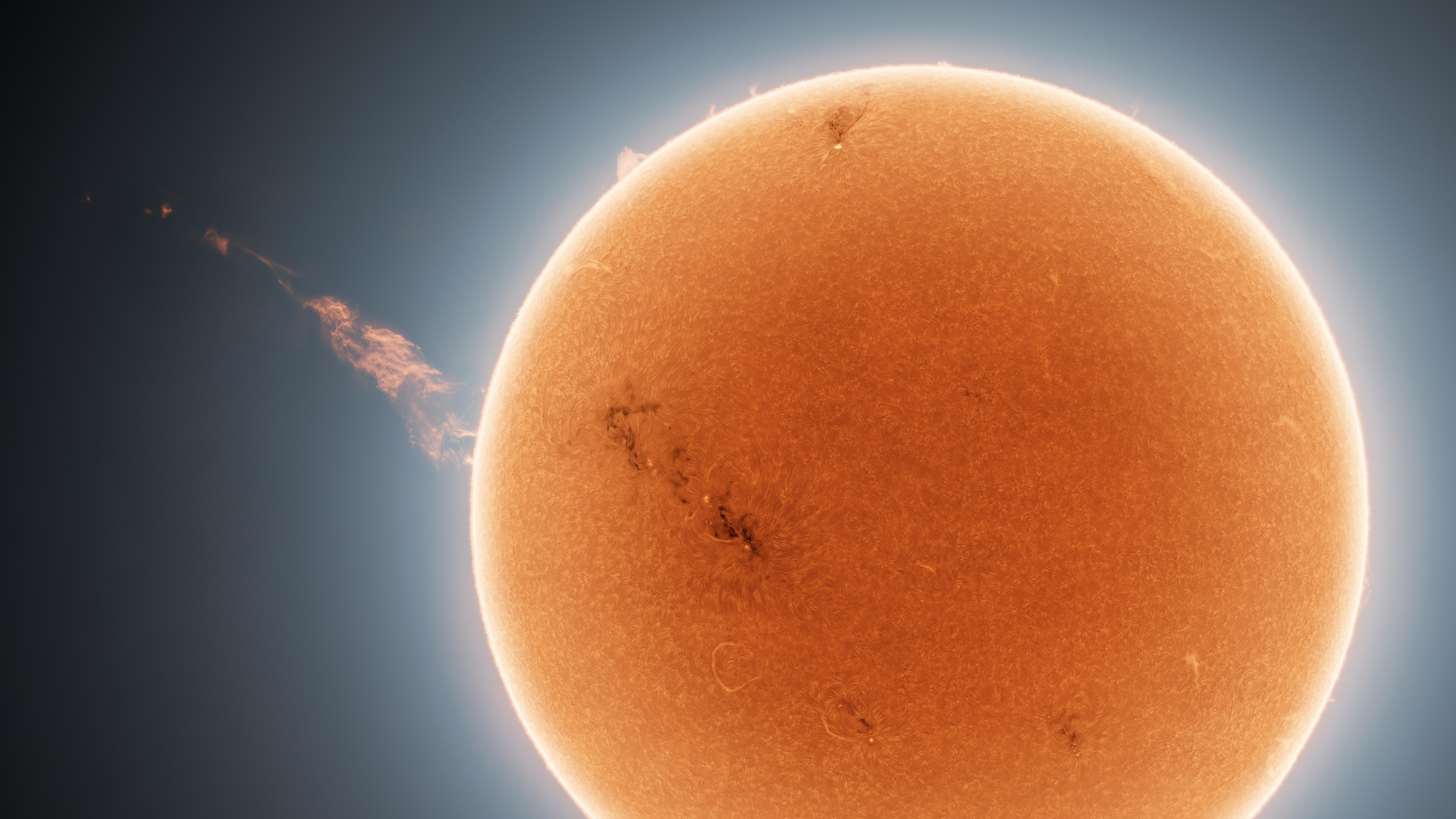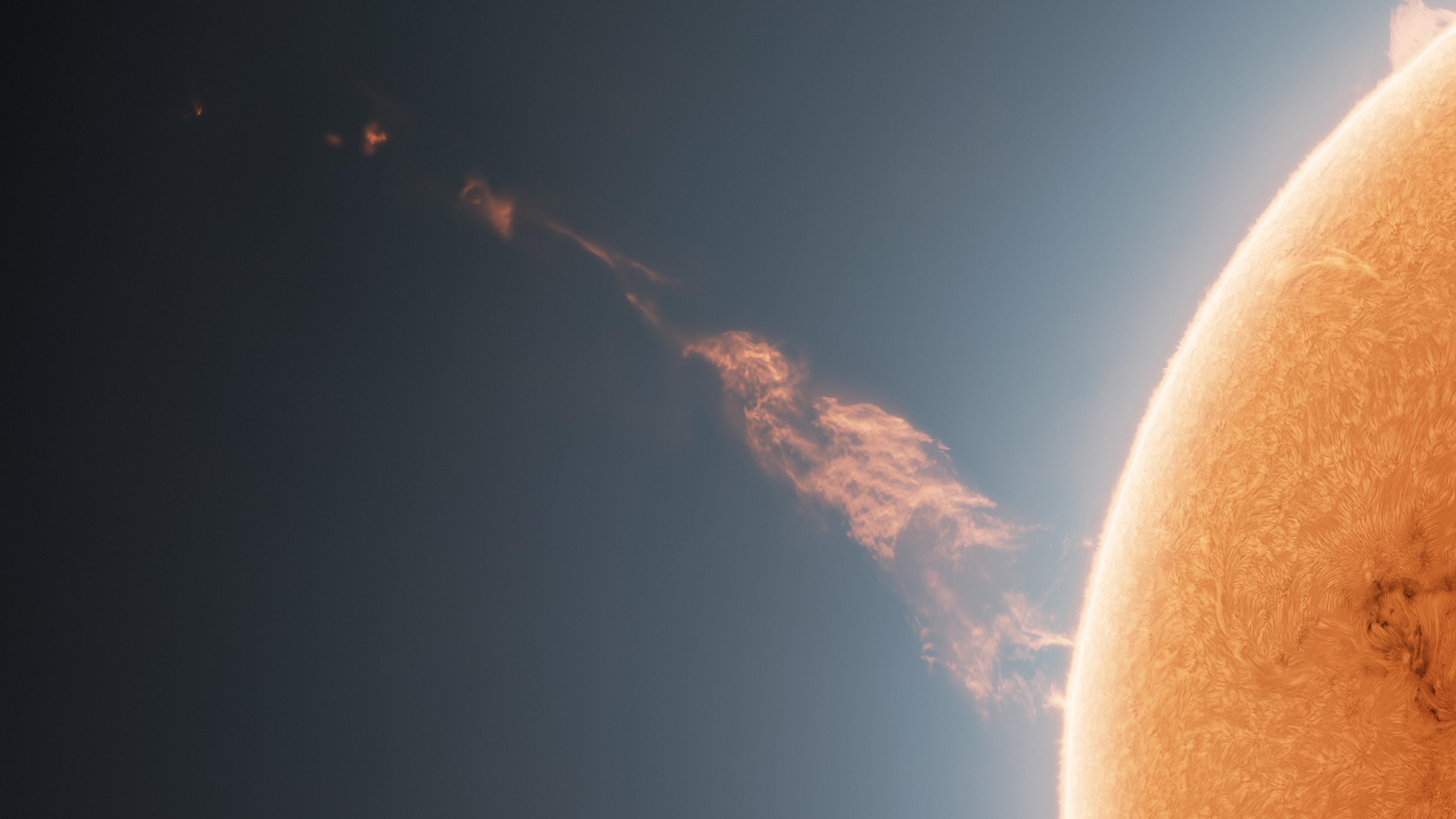1 million-mile-long plasma plume shoots out of the sun in stunning photo
The new "time-lapse" image stacks hundreds of thousands of images.

An astrophotographer has captured a hauntingly beautiful image of a massive plume of plasma shooting out of the sun. The fiery filament, known as a coronal mass ejection (CME), extended into space to a distance of more than 1 million miles (1.6 million kilometers) from the solar surface, according to the photographer.
The image was captured Sept. 24 by professional astrophotographer and Arizona resident Andrew McCarthy, and he shared the stunning view on Reddit on Sept. 25 in the subreddit r/space. The CME was part of a minor solar storm — G-1 class, the lowest category on the National Oceanic and Atmospheric Administration's (NOAA) Geomagnetic Storm Scale — and was pointed away from Earth, according to SpaceWeather.com.
The ethereal ejection was "the largest CME I've ever witnessed," McCarthy wrote on Reddit. The plasma was initially contained in a large loop connected to the sun's surface, known as a prominence, and then broke off and streamed into space at around 100,000 mph (161,000 km/h), McCarthy added.
Related: Could a solar storm ever destroy Earth?
The photo is a false-color composite time-lapse image that stacks hundreds of thousands of images captured over a six-hour period, McCarthy wrote. Between 30 and 80 individual images were captured every second and then were stored in a file that ultimately peaked at around 800 gigabytes. The images were then combined to show the CME in glorious detail.
In the photo, the sun's surface and CME appear orange — but in reality, they are not. The chromosphere (the lowest region of the sun's atmosphere) and CMEs naturally give off a type of light that looks pinkish-red to us and is known as hydrogen-alpha, or H-alpha, light. But because the exposure time of each image was so short, the original images were almost completely white. McCarthy digitally added the orange while compositing the final image, to provide contrast between individual structures on the solar surface and to highlight the CME.
However, as the rest of the image was not filtered with orange, the sun retains an eerie white halo that stands out against the dark backdrop of space.
Get the Space.com Newsletter
Breaking space news, the latest updates on rocket launches, skywatching events and more!

CMEs have become more frequent in recent months as the sun has entered a period of increased solar activity known as the solar maximum, which lasts around seven years. This will provide many more opportunities for people to capture similar images.
"We'll see more of these as we head further into solar maximum," McCarthy wrote. The plasma plumes are also likely to get "progressively larger," he added.
The photographer warned people against trying to observe the sun without the proper equipment.
"Do not point a telescope at the sun," McCarthy wrote on Reddit. "You'll fry your camera or worse, your eyes." The telescope he used to photograph the CME was "specially modified with multiple filters" in order to safely observe the CME and capture the images, he added.
If this amazing image inspires you to try your hand at astrophotography or astronomy in general, then be sure to check out our new best telescopes guide.
Join our Space Forums to keep talking space on the latest missions, night sky and more! And if you have a news tip, correction or comment, let us know at: community@space.com.

Harry is a U.K.-based staff writer at Live Science. He studied Marine Biology at the University of Exeter (Penryn campus) and after graduating started his own blog site "Marine Madness," which he continues to run with other ocean enthusiasts. He is also interested in evolution, climate change, robots, space exploration, environmental conservation and anything that's been fossilized. When not at work he can be found watching sci-fi films, playing old Pokemon games or running (probably slower than he'd like).










